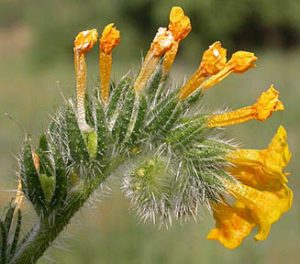

Cultural Conditions: Light: Dappled Sunlight (Shade through upper canopy all day) Deep shade (Less than 2 hours to no direct sunlight) Partial Shade (Direct sunlight only part of the day, 2-6 hours) Soil Texture: High Organic Matter Sand Soil pH: Alkaline (>8.0) Neutral (6.0-8.0) Soil Drainage: Good Drainage NC Region: Coastal Mountains Piedmont USDA Plant Hardiness Zone: 6a, 6b, 7a, 7b, 8a, 8b.Whole Plant Traits: Plant Type: Herbaceous Perennial Perennial Poisonous Woody Plant Leaf Characteristics: Broadleaf Evergreen Habit/Form: Clumping Erect Spreading Maintenance: Low.Attributes: Genus: Helleborus Species: lividus Family: Ranunculaceae Life Cycle: Perennial Recommended Propagation Strategy: Division Seed Country Or Region Of Origin: Corse, Sardegna Particularly Resistant To (Insects/Diseases/Other Problems): Deer Dimensions: Height: 1 ft.Tags: #evergreen #poisonous #drought tolerant #yellow-green #green flowers #shade garden #broadleaf evergreen #winter interest #cpp #spreading #deer resistant #long bloom time #leathery #clumping #fantz #partial shade tolerant #HS302 #woodland garden #perennial See this plant in the following landscape: Cultivars / Varieties: Prefers partial to full shade prefers organic-enriched soil intolerant of bright winter sun and high temperatures Fungal diseases are main problem. Numerous hybrid selections and species available, often difficult to distinguished, misidentified in trade, and each callen lenten rose, a name historically associated with H. Flower center of numerous stamens outlined by tubular nectaries, or fleshy, beaked capsulesīlooms in late winter to very early spring utilized for borders or patios in protected, shady spots poisonous leaves and roots- Greek 'helein'= to injure and 'bora'= food excellent for long, winter blooming display.Leaves are palmately divided into many leaflets.

Short plant with stiff, large, evergreen leaves.It may have occasional problems with crown rot and leaf spot. Helleborus comes from the Greek 'helleboros' meaning 'poisonous food' and the specific derived from the Latin words 'argutus', meaning "sharp", and 'folius' meaning "leafed", describing the sharply toothed leaves. When grown in colder regions it should be protected from winter winds or foliage may be damaged. Plants in colder regions should be well mulched and protected from winter winds. It prefers a well-drained or sandy soil but will tolerate clay if there is good drainage. Hellelborus argutifolius is known for its large light yellow-green flowers in late winter/early spring but also for its evergreen foliage which is attractive year-round. Phonetic Spelling hel-eh-BORE-us LI-vid-us KOR-sik-us This plant has medium severity poison characteristics.


 0 kommentar(er)
0 kommentar(er)
